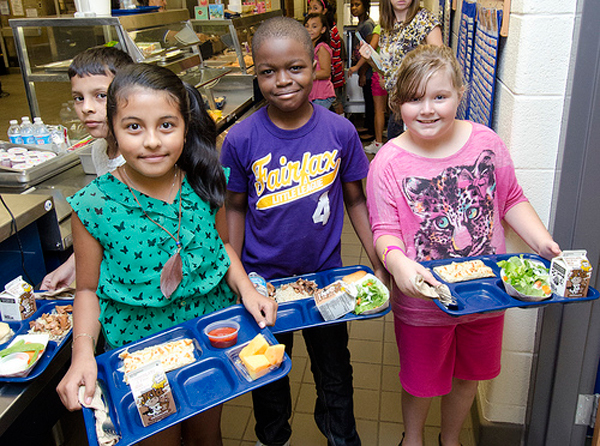- La Feria Community Holds Succesful Business Mixer Event
- Little Nashville to Take Place in Downtown Mercedes
- Lions Basketball Captures District Gold
- La Feria ISD Students Compete in Regional Chess Tournament
- Lions End First Half of 32-4A on a High Note
- La Feria ISD Held Another Successful Parent Conference
- Strong Appearance for Lions at Hidalgo Power Meet
- LFECHS Students Get to Meet Local Actress
- Students Participate in Marine Biology Camp
- Two LFECHS Students Qualify for All-State Band
Texas Ranks High in School Breakfast Program Participation
- Updated: February 20, 2017

Texas schools have some of the highest participation levels in the School Breakfast Program compared to other states. Photo: U.S. Dept. of Agriculture
by Mark Richardson
WACO, Texas — Texas is among the top states in the country for public school participation in the national School Breakfast Program. The 2017 School Breakfast Scorecard from the Food Research and Action Center ranked the Lone Star State eighth-best in the nation for the number of schools providing breakfast to low income students.
Kathy Krey, director of the Texas Hunger Initiative at Baylor University, said it’s important for students who participate in school lunch programs to be included in the breakfast program.
“They’re looking at the number of low income students participating in school breakfast who also participate in school lunch,” Krey said. “The idea is if a low income student is participating in school lunch, they’re likely to also benefit, and have the need, to participate in school breakfast – and benefit from that.”
Krey said in Texas, just over 63 percent of students who get lunch also receive breakfast, compared to the national average of 56 percent. She said the participation rate among Texas schools has been growing steadily over the past several years.
Texas Hunger Initiative research has found that low income students who receive both breakfast and lunch at school have fewer distractions and disciplinary problems, and achieve more in the classroom, Krey said.
“Decreased tardiness and absences, decreases in disciplinary referrals and reports to the nurse, and other health issues that lead to problems with concentration and attendance,” she said. “All those things that help a student have a full belly and be focused in class.”
She said the program identifies students whose family income makes them eligible for financial assistance and provides both meals at reduced or no cost. The meals are offered in both primary and secondary schools through the U.S. Department of Agriculture.


